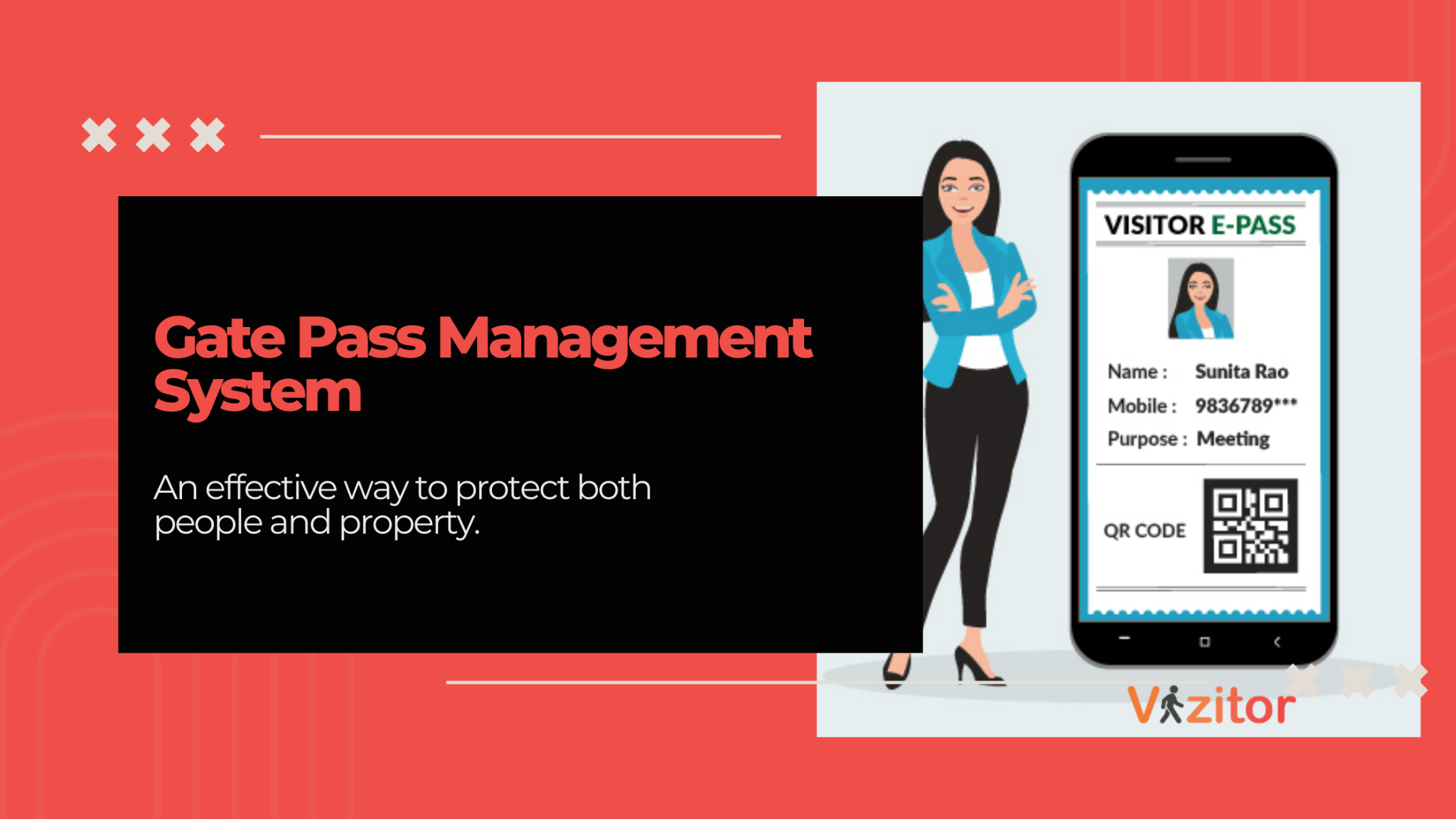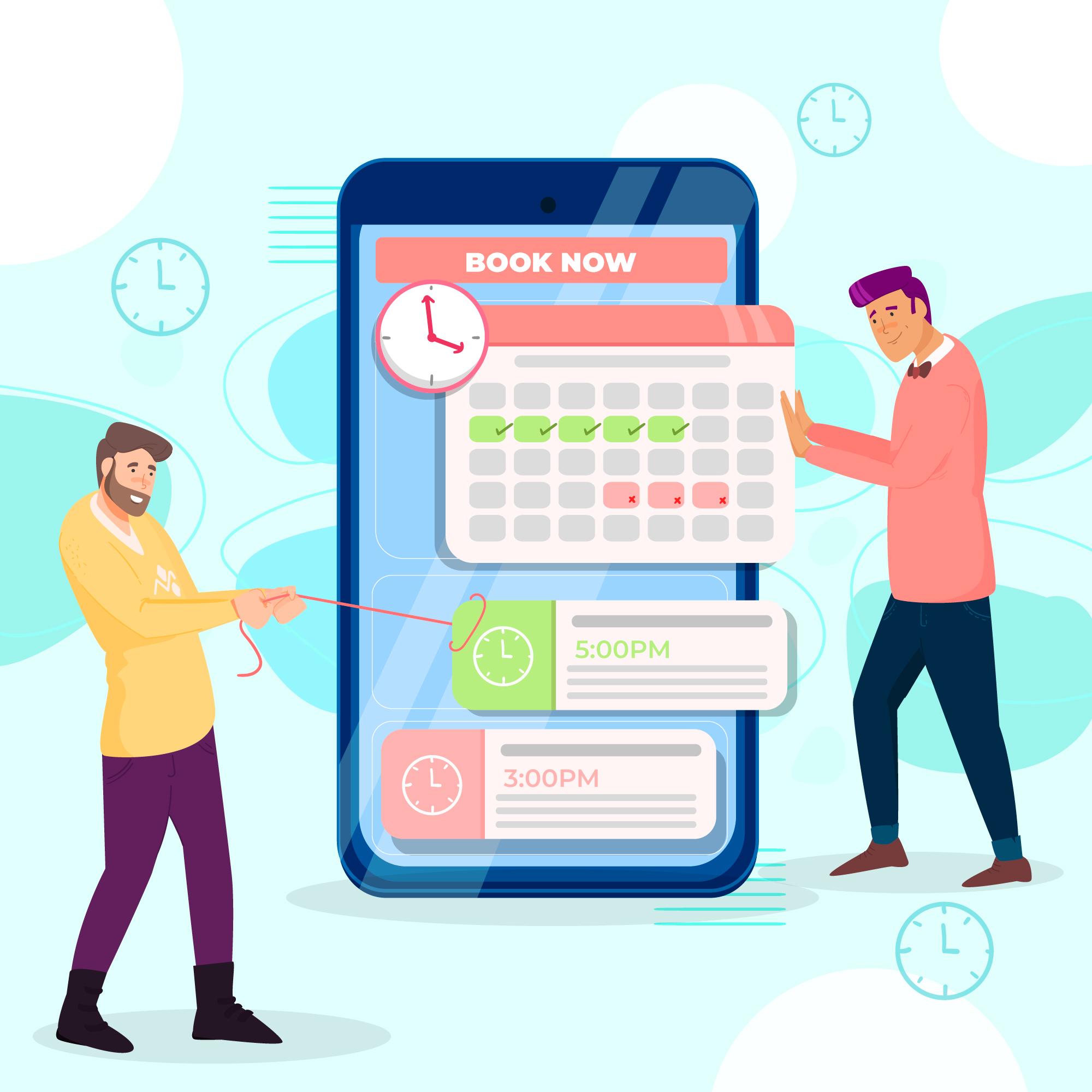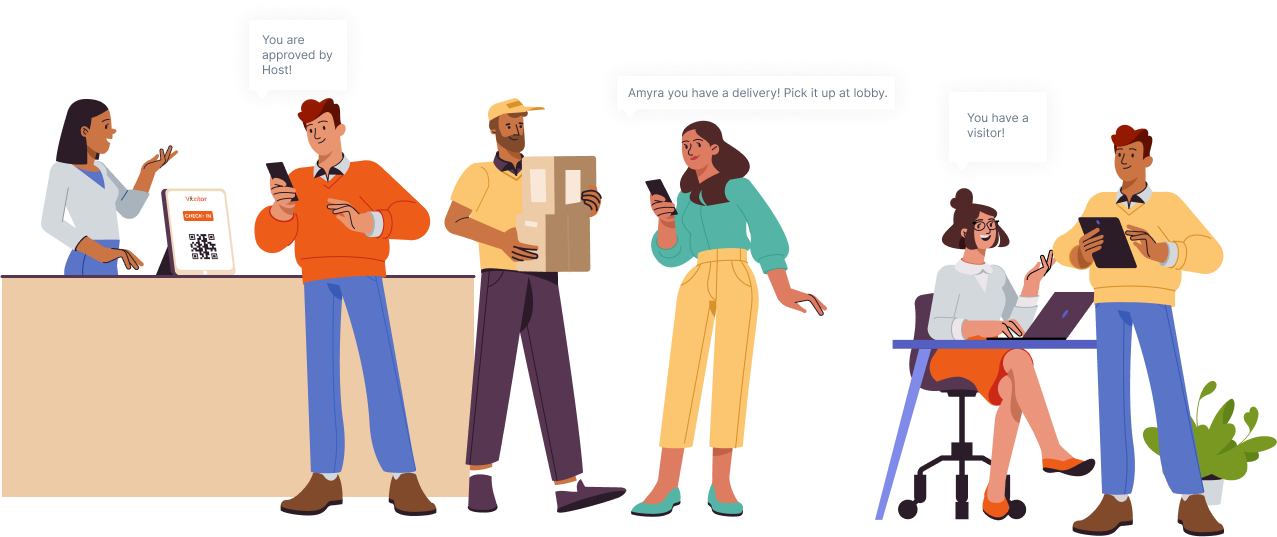Table of Content
Try Vizitor for Free!

Thu, Mar 6, 2025
Read in 17 minutes
Introduction
Did you know that many companies, communities, and apartment complexes struggle to manage visitor access, which can lead to serious security risks? Without a proper system, it’s difficult to track who is entering or leaving, which can compromise the safety of everyone inside.
A Gate Pass Management System is a powerful tool to enhance visitor security. It allows organizations and residential complexes to monitor and control visitor access efficiently. When visitors arrive, their details are logged into the system, creating a record of their entry. This information is often linked to a gate pass, which the visitor must present upon entering and exiting the premises.
This system ensures that only authorized visitors can enter, reducing the chances of unauthorized access. It also provides a clear record of all visits, which can be invaluable for security audits or in case of an incident. Additionally, the Gate Pass Management System minimizes human error by automating the process, making security more reliable and streamlined.
In a world where security is paramount, implementing a Gate Pass Management System is an effective way to protect both people and property.
What Is Visitor Gate Pass Management System?
Modern companies prioritize the security of their buildings, especially against unauthorized and potentially malicious entries. One critical aspect of this security is managing the entry and exit points where visitors and guests pass through. This is where a Visitor Gate Pass Management System becomes essential.
A Visitor Gate Pass Management System is designed to keep detailed records of everyone who enters a facility. When a visitor arrives, they are issued a gate pass or badge, often signed by the host or authorized personnel, to approve their entry. This system not only tracks the visitor’s presence but also ensures that only those with authorized access can enter the premises.
Visitor passes are particularly vital in sectors like schools and hospitals, where the safety of vulnerable populations is a top priority. According to a study by Allied Market Research, the global access control market, including gate pass systems, is projected to reach $16.22 billion by 2027, reflecting the growing emphasis on security across various industries.
Implementing a robust Visitor Gate Pass Management System helps companies maintain a secure environment by controlling who can access the premises. In an emergency, visitor badges also play a crucial role in identifying everyone onsite, ensuring that all individuals can be accounted for and safely evacuated if needed.
Moreover, these systems streamline the check-in process, reducing the workload for security personnel and minimizing human error. With digital records, companies can easily access and review visitor data for security audits or incident investigations.
In an era where security threats are increasingly sophisticated, adopting a Visitor Gate Pass Management System is a practical and necessary measure to safeguard your organization, its employees, and visitors.
Key Features of a Visitor Gate Pass Management System
A Visitor Pass Management System is an essential tool for organizations looking to enhance security, streamline visitor management, and maintain accurate records of all visitors. Below are the key features of a robust Visitor Gate Pass Management System:
1. Visitor Registration
One of the primary features of a Visitor Gate Pass Management System is the ability to register visitors efficiently. When a visitor arrives, their details—such as name, contact information, purpose of visit, and the host they are visiting—are captured and stored in the system. This registration process often includes taking a photograph of the visitor and scanning their ID for verification. By digitizing this process, organizations can reduce wait times, minimize errors, and ensure that all necessary information is accurately recorded.
2. Pre-Registration
Pre-registration allows hosts to register visitors before they arrive. This feature is particularly useful for planned meetings or events. The host can send an invitation to the visitor, including a QR code or digital pass that they can present at the entrance. Pre-registration speeds up the check-in process and provides security staff with advance notice of expected visitors, enhancing overall efficiency.
3. Gate Pass Issuance
Once a visitor’s details are registered, the system generates a gate pass, which can be printed or sent digitally. The gate pass typically includes the visitor’s name, photograph, the date and time of entry, the host’s name, and a unique identification number or QR code. This gate pass serves as a temporary ID, granting the visitor access to specific areas of the premises. Digital gate passes are more secure as they can be easily verified and are less likely to be lost or tampered with.
4. Host Notifications
When a visitor arrives and is registered, the system automatically sends a notification to the host. This notification can be delivered via email, SMS, or through an app, depending on the system’s configuration. Host notifications ensure that employees are immediately informed of their visitor’s arrival, allowing them to prepare or respond as needed. This feature enhances communication and reduces the likelihood of missed or delayed meetings.
5. Time-Stamped Entry and Exit
The system tracks the exact time a visitor enters and exits the premises, providing a clear record of their visit duration. This time-stamped data is crucial for security purposes, as it allows organizations to monitor how long visitors stay on-site and ensure they leave when expected. In the event of an emergency, this data can help account for all individuals present on the premises.
6. Visitor Data Storage and Reporting
All visitor data is securely stored in the system’s database, often in the cloud, allowing for easy access and retrieval. The system can generate various reports, such as daily visitor logs, visitor history, and compliance reports. These reports are invaluable for audits, security reviews, and identifying visitor patterns. With digital storage, organizations eliminate the need for bulky physical records and reduce the risk of data loss.
7. Enhanced Security Features
A Visitor Gate Pass Management System often includes advanced security features, such as integration with CCTV, biometric verification, and access control systems. These features ensure that only authorized visitors can enter sensitive areas and that their movements within the premises are monitored. Additionally, the system can flag suspicious activity or unauthorized access attempts, enabling security personnel to respond quickly.
8. User-Friendly Interface
A good Visitor Gate Pass Management System is designed with a user-friendly interface, making it easy for both security staff and visitors to use. The system should be intuitive, with clear instructions and minimal steps required to complete the registration and check-in process. A simple, efficient interface reduces the likelihood of errors and ensures a smooth visitor experience.
9. Scalability and Customization
Finally, the system should be scalable to accommodate organizations of different sizes and customizable to meet specific needs. Whether it’s adjusting the gate pass format, setting up different access levels, or integrating with existing security infrastructure, a flexible system can be tailored to suit any organization’s requirements.
Benefits of a Visitor Pass Management System
A Visitor Pass Management System is a vital tool for organizations looking to enhance security, streamline visitor check-ins, and maintain accurate records. Here are some of the key benefits of implementing a Visitor Pass Management System:
1. Enhanced Security
One of the most significant benefits of a Visitor Pass Management System is the enhanced security it provides. By registering visitors and issuing passes, the system ensures that only authorized individuals can enter the premises. The system can also integrate with other security features, such as CCTV, access control systems, and biometric verification, to further enhance safety. With a digital record of all visitors, security teams can quickly identify who is on-site at any given time, reducing the risk of unauthorized access and improving overall security.
2. Streamlined Check-In Process
The Visitor Pass Management System automates and simplifies the check-in process, reducing wait times and minimizing errors. Visitors can pre-register online, providing their details before arriving at the premises. This pre-registration speeds up the check-in process, as visitors simply need to present a digital pass or QR code upon arrival. For walk-in visitors, the system allows for quick and easy registration, eliminating the need for manual paperwork. This streamlined process not only enhances the visitor experience but also reduces the workload for security personnel.
3. Accurate Visitor Records
Maintaining accurate records of who enters and exits your premises is crucial for security and compliance. A Visitor Pass Management System automatically records visitor details, including their name, contact information, the purpose of their visit, and the time of entry and exit. This digital record is securely stored in the system’s database, making it easy to retrieve and review as needed. Accurate records are essential for audits, security investigations, and ensuring compliance with industry regulations.
4. Real-Time Notifications
The system sends real-time notifications to the host when a visitor arrives, ensuring that employees are immediately informed. This feature reduces the likelihood of missed appointments or delays, as the host can prepare for the visitor’s arrival or provide instructions to security staff. Real-time notifications also enhance communication between visitors and employees, leading to a more efficient and organized workflow.
5. Improved Visitor Experience
A well-managed Visitor Pass Management System improves the overall visitor experience by making the check-in process smoother and more professional. Visitors are greeted with a modern, organized system that reflects positively on the organization. The ability to pre-register and receive digital passes also adds convenience, as visitors can avoid lengthy waits at the entrance. A positive visitor experience is crucial for building good relationships with clients, partners, and guests.
6. Efficient Data Management and Reporting
All visitor data is stored digitally, eliminating the need for physical paperwork and reducing the risk of data loss. The system can generate various reports, such as daily visitor logs, visitor history, and compliance reports, providing valuable insights for security audits and management reviews. With easy access to accurate data, organizations can quickly identify patterns, monitor visitor behavior, and make informed decisions to improve security and operations.
7. Scalability and Flexibility
A Visitor Pass Management System is scalable, meaning it can grow with your organization. Whether you’re a small business with a few visitors each day or a large corporation with hundreds, the system can be customized to meet your needs. You can add new features, integrate with existing security systems, and adjust settings as your organization evolves. This flexibility ensures that the system remains relevant and effective, no matter how your visitor management needs change over time.
8. Compliance with Regulations
In many industries, maintaining accurate visitor records and ensuring controlled access to sensitive areas is a regulatory requirement. A Visitor Pass Management System helps organizations comply with these regulations by providing a secure, reliable method of tracking and managing visitor access. The system can also generate compliance reports, making it easier to demonstrate adherence to industry standards during audits or inspections.
Types of Gate Passes
Here’s a breakdown of the common types of gate passes and their purpose:
1. Employee Gate Pass
- Used to regulate employee entry and exit
- Can be integrated with biometric, RFID, or digital tracking systems
- Ensures restricted access to sensitive areas
2. Visitor Gate Pass
- Issued to guests, clients, or external visitors
- Can be temporary or one-time-use
- Helps in record-keeping and security monitoring
3. Vehicle Gate Pass
- Used for authorizing vehicle movements (entry and exit)
- Essential for parking management and security tracking
- Can be integrated with ANPR (Automatic Number Plate Recognition) systems
4. Material Gate Pass
-
Allows movement of goods, machinery, or materials in and out of the premises
-
Prevents theft, unauthorized removal of assets
-
Can be classified as:
- Returnable Material Gate Pass (for borrowed equipment)
- Non-returnable Material Gate Pass (for permanent asset movement)
5. Contractor Gate Pass
- Issued to temporary workers, maintenance staff, or vendors
- Tracks contract workers’ hours and security clearance
- Ensures compliance with safety protocols
6. Digital & Biometric Gate Pass
- Modern contactless or QR-based digital gate passes
- Uses biometric authentication or mobile app integration
- Ideal for corporate offices, factories, and high-security zones
Traditional Vs. Digital Visitor Gate Pass Management System
Managing visitor access is crucial for maintaining security in any organization or facility. Traditionally, visitor management was handled through paper-based gate passes, but with advancements in technology, digital systems have become more prevalent. Let’s explore the differences between traditional and digital visitor gate pass management systems, highlighting the benefits and drawbacks of each.
Traditional Visitor Gate Pass Management System
The traditional visitor gate pass system is a manual process where visitors fill out their details on a paper form. Once completed, the security personnel issues a physical gate pass or badge, often signed by the host or an authorized individual. This pass must be shown at various checkpoints within the premises.
Advantages:
Simplicity: The process is straightforward, requiring minimal technology.
Low Initial Cost: There is no need for expensive software or hardware; all that is needed are paper forms and badges.
No Need for Digital Literacy: Since it’s paper-based, there’s no requirement for visitors or staff to be familiar with digital devices.
Digital Visitor Gate Pass Management System
The digital visitor gate pass management system automates the entire visitor management process using software and digital devices. Visitors enter their details on a digital platform, either through a self-service kiosk, mobile app, or by security personnel using a tablet or computer. A digital pass is then issued, which can be a QR code, RFID badge, or digital ID.
Advantages:
Efficiency: The digital process is much faster, reducing wait times and streamlining the visitor check-in experience.
Enhanced Security: Digital passes are difficult to forge, and the system can include additional security features like photo capture, digital signatures, and real-time notifications to the host.
Accurate Data: Digital systems minimize human error, ensuring that visitor information is recorded accurately and legibly.
Data Storage and Reporting: Digital records are stored securely in the cloud, making it easy to access visitor data for audits, compliance, or incident investigations. According to MarketsandMarkets, the visitor management system market is expected to grow to $1.64 billion by 2026, reflecting the increasing adoption of digital systems.
Customization: Digital systems can be customized to meet specific security needs, including pre-registration, automatic alerts, and integration with other security systems like CCTV and access control.
Visitor Pass Management Modules
Managing visitor access is crucial for maintaining security within any organization. A well-structured Visitor Pass Management System typically includes several key modules that work together to ensure a smooth and secure process for both visitors and employees. Below is a detailed overview of the main modules within a Visitor Pass Management System: the Admin Module, Host Module, and Security Gate Module.
1. Admin Module
The Admin Module is typically installed on the administrative side of the system, giving the admin complete control over various aspects of the visitor management process. Here’s what the Admin Module does:
Company and Host Management: The admin can define and manage the details of companies and hosts (employees who may receive visitors). This includes setting up profiles for different hosts, specifying their roles, and managing their contact information.
User Rights Management: The Admin Module allows the admin to control who has access to specific features and information within the system. For example, certain users may be granted permissions to view visitor logs, while others may have the ability to modify settings or generate reports.
Gate Pass Format: The admin can customize the format of gate passes according to the organization’s needs. This might include adding company logos, adjusting the layout, or including specific information fields that must be filled out by visitors.
Report Generation: The module also provides tools for generating various reports, such as daily visitor logs, visitor trends, and compliance reports. These reports are invaluable for audits, security reviews, and tracking visitor patterns over time.
2. Host Module
The Host Module is designed for employees (hosts) who may receive visitors. This module provides hosts with the tools they need to manage visitor interactions efficiently:
Visitor Details Access: The host can view visitor details online through a secure portal. This allows them to see who is on their way and prepare accordingly.
Host Notifications: One of the key features of this module is the notification system. When a visitor arrives and registers at the security gate, the host is immediately notified. This notification can be sent via email, SMS, or an app notification, depending on the system’s setup.
Host Responses: The host can also respond to notifications. For example, they can confirm that they are available to meet the visitor or provide instructions to the security gate staff if further checks are required before granting entry.
3. Security Gate Module
The Security Gate Module is installed at the entrance of the premises and is primarily used by security personnel to manage visitor entry:
Visitor Registration: When a visitor arrives, the security staff registers their details in the system. This often includes taking a photograph of the visitor, capturing their ID details, and recording the purpose of the visit.
Host Notification: Once a visitor is registered, the system automatically sends a notification to the host. This ensures that the host is aware of the visitor’s arrival and can take appropriate action.
Time Tracking: The module keeps precise records of when visitors sign in and out. This time-stamped data is automatically stored in the cloud, making it easily accessible for future reference.
Site Visibility: The Security Gate Module enhances overall site visibility by allowing staff to monitor every entry and exit point. This real-time tracking helps in maintaining a secure environment, as security personnel can quickly identify any unauthorized attempts to enter or exit the premises.
Revolutionary Impact of Gate Pass Management System
• The gate pass system is often customized as per the necessity of the organization or residential complex. Providing the gate pass to the visitors ensures their photograph and details of the Visitor.
• A gate management system is issued to the visitor, capturing the details and identification purposes.
• After that, the host instantly gets notified about the visitor. With host approval, the visitor is issued a gate pass to authenticate entry into the premises.
• The gate pass is returned so that the out time is recorded and saved within the database alongside other details.
• Visitor is an easy-to-use software. The visitor management system denied the entry of unauthorized visitors. Only specific people can pass the premises.
• It also restricts access to specific areas to support the company’s security system.
Beyond Visitor Management: Exploring Alternative Approaches to Premises Security
When it comes to visitor management, security reigns supreme. But when it comes to safeguarding your premises, it’s about more than just the traditional badges and logbooks. Think forward, think innovation. Two-way radio communication headsets are a hidden gem in the world of security. These devices enable real-time, on-the-fly communication between your security and staff teams. Imagine a seamless response to any security concern or an emergency, ensuring swift action.
Whether it’s addressing unexpected situations, managing visitor flow, or thwarting unauthorized access, these headsets bolster your security in ways you might not have considered. What’s more, they enhance not only security but overall guest satisfaction.
Explore Waveband Communications’s collection of advanced two-way radio communication headsets to see how they can raise the bar on your security game with a wireless radio headset.
Frequently Asked Questions (FAQs)
1. What is a gate pass system?
A gate pass system is a security management tool used to authorize and track the entry and exit of employees, visitors, materials, or vehicles within a business or organization.
2. What are the different types of gate passes?
Common types include employee gate passes, visitor gate passes, vehicle gate passes, material gate passes, contractor passes, and digital gate passes.
3. Why is a digital gate pass system better than a manual one?
A digital gate pass enhances security, reduces manual errors, and offers real-time tracking, whereas a manual system is more time-consuming and prone to inaccuracies.
4. Can gate passes be integrated with biometric security?
Yes, modern gate pass systems support biometric, RFID, and QR-code-based authentication for enhanced security.
5. What industries benefit from gate pass management?
Gate pass systems are widely used in corporate offices, manufacturing plants, warehouses, educational institutions, and hospitals.
It’s Time to Upgrade!
It’s time to upgrade to a reliable digital front desk and visitor management solution. It makes your establishment more productive and modernized.
Organizations and other sectors have started using visitor management software or Visitor Gate pass Software. This records the accurate details of the visitors.
Presently, the security of visitors and employees always remains at the top priority list of every business facility. Security of any corporate sector is inevitable to ensure a peaceful and safe environment. Altering the traditional ways of manual maintaining of records.
Conclusion
Visitor gate pass management system provides a way to control, & track your organization’s visitor traffic effectively. It helps to prevent any unauthorized or unwanted person from entering the premises. The flexible architecture Gate pass Software, like Vizitor, allows the organization to access the data they need directly. This system improves the security and productivity of the organization. If you want to know more about Vizitor, get in touch today.










